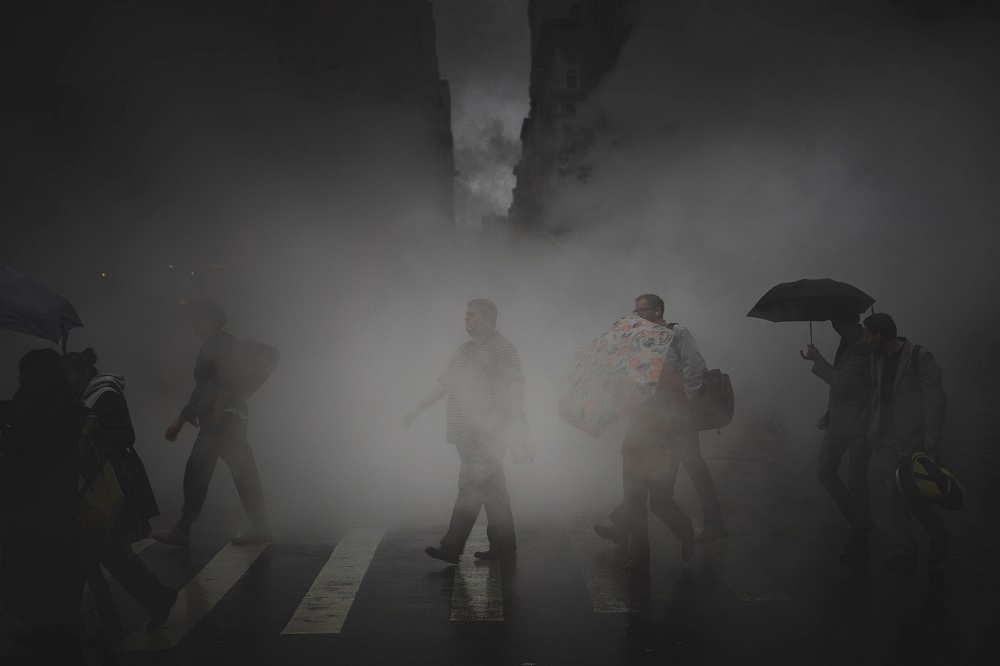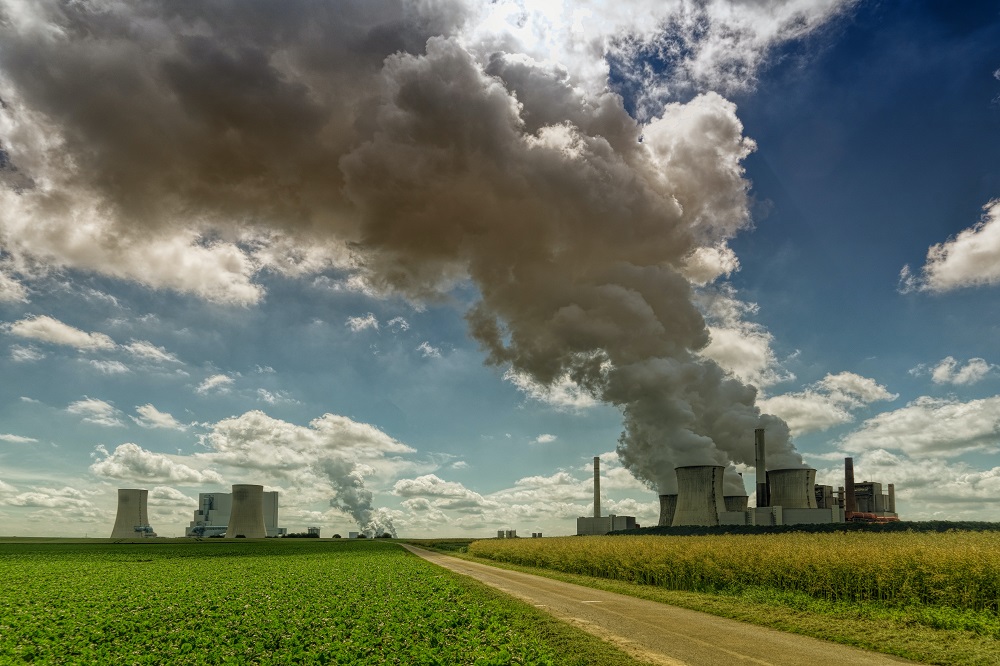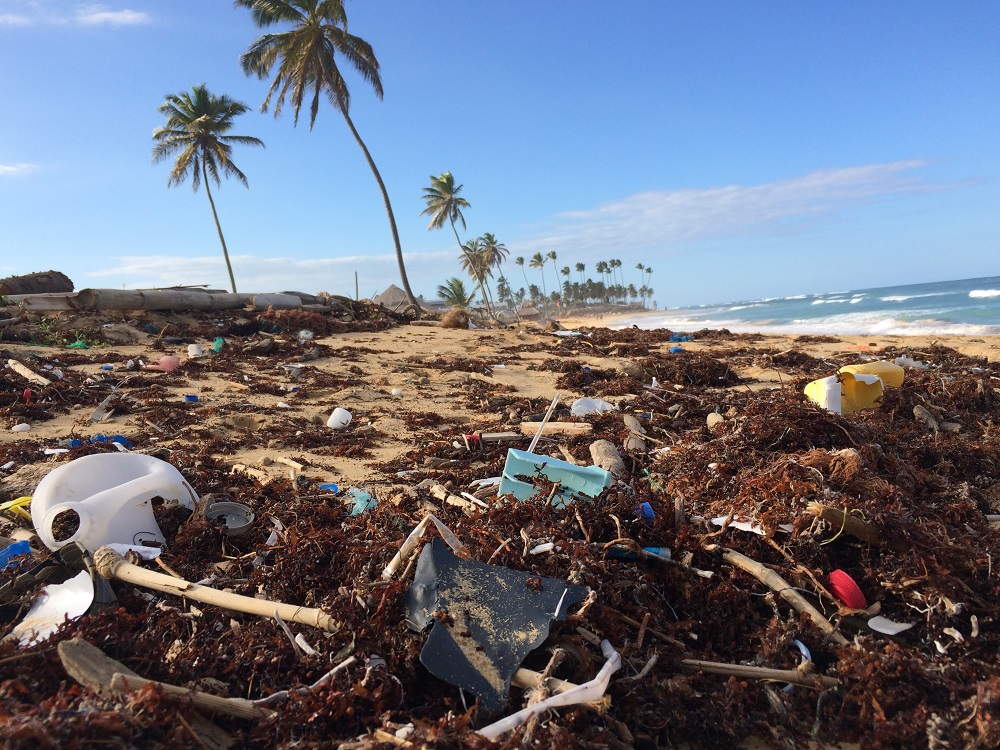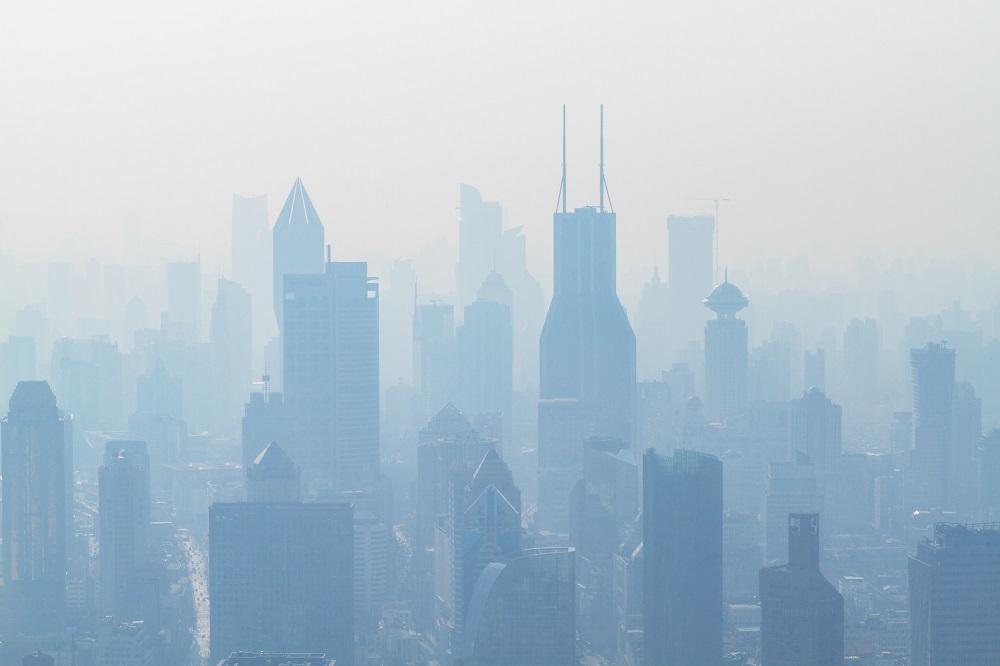A global crisis, air pollution has severe implications for the environment as well as human health.
Almost 90% of the global population in 2022 experienced unhealthy air quality. And only six countries met the World Health Organization’s (WHO) recommendations of safe air pollutant levels, per the Swiss air quality technology company IQAir report.
The most polluted cities in the U.S. are Columbus, Ohio, followed by Atlanta, Chicago, Indianapolis, and Dallas. Air quality in Columbus reported 13.1 micrograms of PM 2.5 particles per cubic meter in 2022, making it one of the majorly polluted cities in the U.S.
Air pollution takes off more than two years of the average global life expectancy, a report from the Energy Policy Institute at the University of Chicago highlighted. 60% of particulate matter air pollution is from fossil fuel combustion.
The Biden administration has proposed limiting pollution of industrial fine soot particles from the level of 12 mg per cubic meter to a level ranging from 9 to 10 micrograms per cubic meter. Public health advocates have criticized this proposal as well.
Air pollution monitors offer hard data that inspires communities to demand change and hold polluters to account. However, monitoring the data is patchy or unequal, and vulnerable communities are often left with no data to act on.
Read also - Fastest Growing Cities in the US

Rankings: Most Polluted Cities in the United States
Some of the worst hotspots for fine particle air pollution in the U.S., revealed in the analysis, are as follows-
The top spot is not a traffic-clogged metropolis or even a renowned heavy industry zone state but a small town enveloped by farmland and mountains.
The fine particles of air pollution released from cars, factories, and wildfires, along with dusty agricultural activities, are small enough to travel deeper into the lungs and the bloodstream, thereby increasing death rates due to respiratory disease, heart attacks, and even strokes.
As per the reports issued by the American Lung Association, the most polluted cities in the United States are as follows.
Top 10 Most Polluted Cities in the U.S.
- Los Angeles-Long Beach, CA
- Visalia, CA
- Bakersfield, CA
- Fresno-Madera-Hanford, CA
- Sacramento-Roseville, PA
- San Diego-Chula Vista-Carlsbad, CA
- Phoenix-Mesa, AZ
- San Jose-San Francisco-Oakland, CA
- Houston-The Woodlands, TX
- New York-Newark, NY-NJ
Los Angeles-Long Beach was listed as the most polluted area in the United States. The high population density of the city contributed to more motor vehicles and diesel engine emissions. The frequent sunny days, along with low rainfall, contribute to ozone formation and high levels of dust and fine particles.
An agricultural town in California’s Central Valley, the area around Bakersfield reported the most unhealthful air in America. Bakersfield is considered an unlucky location, surrounded by mountains that trap toxic farming chemicals, truck and train fumes, and oil-drilling exhaust. It also has pollution blowing south from other parts of the populous state. Environmentalists and reports have highlighted that the local air regulators have worsened the situation in Bakersfield with lax enforcement against industrial polluters. The worst census tracts have up to 16 micrograms of fine particulate pollution per cubic meter over the years, which is above the threshold set by the EPA. The entire region around the south end of California’s Central Valley has failed to meet the Clean Air Act’s targets for the majority of the last 25 years.
Read also: Top 10 World’s Greenest Countries

Mapping Cities with the Most Dangerous Levels of Pollution
Research has highlighted that even small amounts of pollution, such as those typically present in the least polluted cities, are likely to have an impact on health. Mapping the most congested cities helps in identifying the primary sources of pollution as well as their causes. It also helps in gaining an understanding of the consequences of high levels of pollution on human health along with the environment.
Texas is one of the most polluted states in the United States
Almost 1 in 4 people in the United States, which is more than 119 million residents, live with air pollution that is likely to hurt their health and shorten their lives, as per the report from the American Lung Association.
Nearly 64 million Americans today live in counties with failing grades for daily pollution. The report highlights that the number of people living in counties with failing grades (related to the daily spikes of particle pollution) was the highest it has ever been in the last decade.
Urban centers in the States, in Rust Belt, and the industrialized East had obtained the most failing grades in the early 2000s. However, many have cleaned up and are now getting passing grades.
On the contrary, Bakersfield, California, displaced Fresno as the metropolitan area with the worst particle pollution. Fresno still has the most-polluted label for year-round particle pollution. It tied places with Visalia in the agricultural San Joaquin Valley.
Los Angeles has the worst ozone pollution. California has been reported to have one of the more progressive environmental legislations in the country; however, the climate crisis has not been kind.
All these cities, including Bakersfield and Visalia, are located in a valley near the forests that have been witnessing big fires. There has also been intense agricultural and industrial work, making the conditions worse for air pollution.
Read also: Most Expensive Cities in the US

Main Sources of Air Pollution
Air pollution today is considered the greatest environmental threat to public health across the globe.
The primary sources of air pollution in each of the listed most polluted cities in the U.S. are residential pollution caused due to cooking and heating using biomass or generating electricity from fossil fuels.
Windblown dust is also considered a major source. Emitted from the surface of the earth to the atmosphere, windblown dust is said to have significant impacts on atmospheric phenomena, air quality, as well as human health. Cardiovascular and respiratory disorders, meningococcal meningitis, conjunctivitis, and skin-related irritations are some of the health problems that have been associated with exposure to dust. Dust can also contain heavy metals or other toxic compounds, which can further cause a wide range of acute and chronic health effects.
With every breath, we intake certain tiny particles that can damage our lungs, hearts, and brains and even cause a host of other health-related problems. The most dangerous of these particles - including soot, soil dust, and sulfates - are fine particles of 2.5 microns or less in diameter, also referred to as PM2.5.
It is, therefore, vital to improve the air quality to support our health and the environment.
Read also - Most Sustainable Cities in the US
Conclusion - Most Polluted Cities in the US
The government needs to understand that communities should play a key role in making decisions to help support measures for clean air. The government and residents hold the power to make a difference.
At the federal level, government organizations and agencies are working to set stronger limits on air pollution and protect public health as well as advance environmental justice. The country is now moving towards using zero-emissions vehicles and setting stronger national standards for particle pollution and ozone.
The Inflation Reduction Act funding is helping to reduce emissions at ports. However, more and more should be invested in zero-emission heavy-duty vehicles as well as in infrastructure that will further help in improving air quality monitoring. States can also employ the Clean Air Act authority and adopt the California zero-emissions standards for cars and trucks to further support the cause.
The damage from pollution is becoming increasingly apparent, and countries across the globe are now in search of green alternatives to prevent further damage. Solar and wind energy, along with non-toxic products and eco-friendly materials, are being integrated to help preserve the planet.
With a presence in New York, San Francisco, Austin, Seattle, Toronto, London, Zurich, Pune, Bengaluru, and Hyderabad, SG Analytics, a pioneer in Research and Analytics, offers tailor-made services to enterprises worldwide.
As a leading ESG consulting firm in the US, SG Analytics’ ESG data and research solutions are driven by secondary research to analyze ESG trends, metrics, news, and controversies. Contact us today if you are in search of generating deep insights and incorporating ESG (Environmental, Social, and Governance) integration and management solutions to boost your sustainable performance.

About SG Analytics
SG Analytics is an industry-leading global insights and analytics firm providing data-centric research and contextual analytics services to its clients, including Fortune 500 companies, across BFSI, Technology, Media & Entertainment, and Healthcare sectors. Established in 2007, SG Analytics is a Great Place to Work® (GPTW) certified company and has a team of over 1100 employees and has presence across the U.S.A, the U.K., Switzerland, Canada, and India.
Apart from being recognized by reputed firms such as Analytics India Magazine, Everest Group, and ISG, SG Analytics has been recently awarded as the top ESG consultancy of the year 2022 and Idea Awards 2023 by Entrepreneur India in the “Best Use of Data” category.









